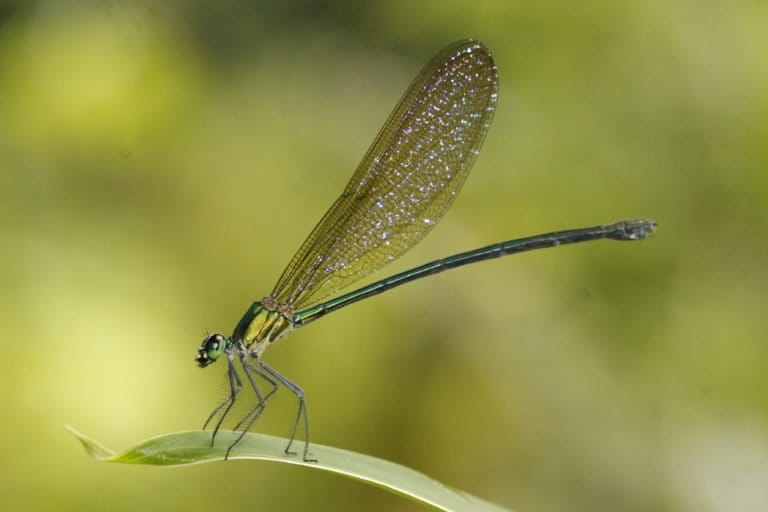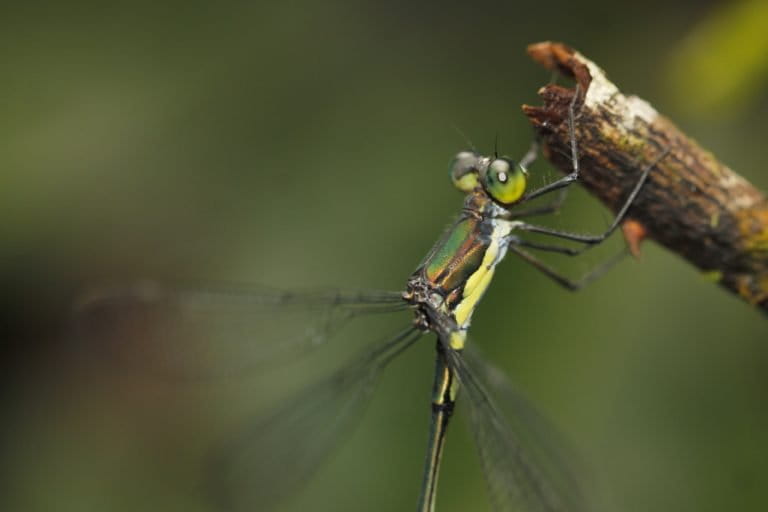- Recent sightings of dragonfly swarms over Sri Lankan skies have sparked interest in the migration of this insect, one of wildlife’s most spectacular yet least-known movements.
- As cool weather beckons these gossamer-feathered flutterers to the tropical Indian Ocean island, researchers call for addressing research gaps to drive conservation efforts for endemic dragonfly and damselfly populations.
- Pollution of water bodies, destruction of forest patches, and increasing air pollution are among the key threats facing these charismatic insects.
COLOMBO — In late October, swarms of dragonflies began darkening the skies along Sri Lanka’s western coast, sparking speculation about a possible “dragonfly movement.”
Among the most charismatic of insects, dragonflies and damselflies, from the same Odonata order of insects, are a sight to behold, whether static or in motion. The end of the northern hemisphere summer brings countless birds and insects through this biodiverse island in the Indian Ocean, but this time around there is growing concern that the increasing pollution of water bodies and general habitat loss could threaten the gossamer-winged dragonflies and damselflies.
“Dragonfly migration is considered one of the most fascinating though lesser-known” phenomena of the wildlife world, says Amila Prasanna Sumanapala, an expert on Odonata ecology and conservation and the author of the 2017 Field Guide to the Dragonflies and Damselflies of Sri Lanka. “With the onset of fall, these colorful long-bodied insects do travel, though that remains an understudied area.”

High diversity and endemism
In the past decade, several discoveries and rediscoveries have highlighted the point that Odonata are still understudied in Sri Lanka. A 2006 pictorial study of dragonflies and damselflies by a leisure company recorded 117 species in Sri Lanka; Sumanapala’s 2017 field guide lists 129 — nearly half of them found nowhere else on Earth.
“Out of 58 endemic species, 15 are new discoveries. There had been a couple of removals due to erroneous listing but 129 described species within 13 families reflect high diversity,” Sumanapala says. “In addition to the 58 endemics, there are seven subspecies, totaling to 65. That’s nearly 50 percent of total dragonfly and damselfly species recorded here.”
But 61 of the Odonata species in Sri Lanka are listed as threatened, and another 11, including five of the endemic species, are described as data deficient.

Among the critically endangered species is the emerald Sri Lanka spreadwing (Sinhalestes orientalis) — a species not seen since it was first described in 1862 and thought to be extinct until Sumanapala rediscovered it in 2012. Others include the Sri Lanka vermilion forester (Lyriothemis defonsekai), a recent discovery restricted to a handful of wet-zone locations, and the Sri Lanka smoky-winged threadtail (Elattoneura leucostigma), a damselfly species confined to the upper montane zone and is critically endangered.
Lack of research
The lack of knowledge about Sri Lanka’s Odonata species is a major obstacle to devising meaningful conservation strategies, Sumanapala says. While some trends are recorded on dragonfly migration in both spring and fall, there is little evidence of their return or whether they move in as large numbers as birds do, though it is known that their migration is often multi-generational.

“Some species are not just endemic but point endemic,” Sumanapala tells Mongabay, meaning their range is highly restricted and thus they’re at high risk from any disruption to their habitat. “But conservation planning requires more research on both habitat and distribution.”
He adds that there’s inadequate research in the north and east of the island, regions that were inaccessible during the quarter-century civil war that ended in 2009.
“Certain species had not been recorded in 50 years or more while there are no photographic records of some living species. There is inadequate knowledge on larval stages of some species as well,” Sumanapala says.

But significant research efforts are currently underway. In 2017, Sumanapala undertook a pilot study on the future of endemic Odonata species in Sri Lanka under changing climate patterns, with a view to understanding how species distribution is affected by climate change.
Research on Sri Lanka’s dragonflies and damselflies over the past two decades has focused largely on distribution, while diversity remains largely understudied — the reason behind the ongoing spate of new discoveries. These baseline studies are critical before delving into complexities, says Sumanapala, who is all set to undertake a study on dragonfly biogenetics.

On the flip side, the lack of research could also be skewing public perceptions that dragonfly and damselfly populations are dwindling across the island, Sumanapala says.
“To make such claims, there needs to be substantial data but it is well worth studying,” he says. He points to forest-dwelling species that are highly seasonal and thus effectively disappear for much of the year: “During certain visits to Sinharaja, I have returned without seeing a single dragonfly,” he says.

Conservation and community
Sri Lanka is home to a rich variety of species for multiple reasons, Sumanapala says.
As a tropical country, it’s more biodiverse than temperate ones. But a bigger reason is Sri Lanka’s complex geological past. “The island is home to some Old World species. Due to ancient geological connectivity to Africa, Madagascar and India millions of years ago, significant geological events had left the island with species originating from many different places. It also contains different ecological regions and ecosystems that offer a diversity of habitats, which had aided a unique evolution process and speciation,” Sumanapala says.
When it comes to dragonflies and damselflies, conservation is critical because these species play an important role in the ecological balance of the tropical island’s environment. They can biologically control insects which are crop pests and vectors of diseases, including mosquitoes, by feeding on them — a natural way to effectively reduce harmful insects.
While adult dragonflies and damselflies are mostly airborne creatures, their eggs and larvae can be found among aquatic vegetation in the very shallow areas of lakes, tanks, streams and other water bodies. “Some species of Odonata can only breed in clean water because both larvae and eggs are highly sensitive to pollution. Their presence therefore is considered an indicator of good water quality,” Sumanapala says.

Conservation efforts need to be multi-pronged, he adds, emphasizing the urgent need for systematic islandwide studies that contribute to a conservation action plan as a key priority. Habitat restoration, streams and wetland conservation and research beyond conservation assessments are equally important, he says.
Community support should be a pillar of conservation policy, he adds. Sumanapala and others in the field work with schoolchildren and young adults to create awareness and play a lead in iNaturalist, a citizen science movement that crowdsources data about various species, such as visual observations and mapping. At an even more fundamental level, conservation can start in the home, Sumanapala says.
“If you like dragonflies, introduce a small pond to your home garden,” he says. “Be careful when introducing any plant into a pond, as the vegetation needs to be carefully maintained to avoid overgrowing.”
Banner image of an endemic and common damselfly, Green’s gem (Libellago greeni), found in the lowlands and the hilly region of Sri Lanka, courtesy of Amila Prasanna Sumanapala.
